For more lessons in the Third Grade Manatee Curriculum series, go to http://edis.ifas.ufl.edu/topic_series_third_grade_manatee_workbook.
Description
Students will learn how scientists identify and track individual manatees.
Objective
By the end of the activity, students will be able to correctly identify at least three manatees by using their scar patterns.
Standards Addressed
Florida—SC.3.N.1.1, SC.3.N.1.3; SC.3.N.1.6
Vocabulary
endangered, extinct, population, migration, scar patterns
You Will Need
- Optional: Rulers
- Printouts or pictures of manatees for each group of students
- Copies of "Key to Manatee Identification Drawings" and "Manatee Scar Sheet" sheet for each group of students
- Copies of "Manatee Sketch Worksheet" for each student. Each student will need at least one copy of the "Manatee Sketch Worksheet," and possibly more.
Strategy
- Ask students if they can think of reasons that scientists might want to be able to identify individual manatees. (Answer: to be able to count manatees, tell which mom belongs with which calf, be able to track a released animal, etc.) How do we identify different people? (Answer: we all look different—hair color, eye color, height, etc.) Explain to students that they will learn how scientists identify individual manatees. Ask if anyone can think of some way that people can tell one manatee from another. Ideas might include color (but manatees are all pretty similar in color), size (but manatees can grow). The commonly used method is "by using scars."
- Ask students where they think each of the manatees' scars came from. Explain to students that manatees are very slow-moving animals and cannot get out of the way of boats.
- Divide students into groups of up to six; give each group copies of photos of different individual Florida manatees (included with this lesson). Explain that they will use the scar patterns on the manatees to identify them. These are all manatees that are commonly seen at Blue Spring State Park.
- Give each group a copy of the "Key to Manatee Identification Drawings" and copies of the "Manatee Sketch Worksheet." Explain that students will try to identify the manatees in their photographs by sketching what they see. Show the class a copy of Ranger Wayne's "Manatee Scar Sheet" (perhaps using a projector) and briefly show how scars and damaged flippers are indicated on the chart. Ranger Wayne worked for many years as a park ranger at Blue Spring State Park, and he developed the scar chart so that he (and other rangers) could identify the manatees that came to the spring in the winter. As of 2014 he is retired, but he still visits the park frequently during the winter to keep track of the visiting manatees. Explain that students will create their own sketches from the photographs, and then will identify the manatees by comparing both the sketches and the photos to the "Manatee Scar Sheet." This is similar to the method that scientists use to visually identify manatees.
- The manatee photographs are labeled A–F. Tell students to select one photograph and study it carefully. They should look for distinguishing scars or other features that make this manatee unique. Questions that they should consider:
- Which side of the manatee is the scar on?
- What is the shape of the scar?
- What color is the scar?
- Are there other distinctive markings on the skin?
- Do you see anything missing from the manatee?
6. Working in their groups, have students label each of their sketch worksheets with the same letter as the photograph they are about to sketch (A, B, C, D, E, and /or F).
7. Tell students that they can now begin their sketches. They should draw the unique scars and features that they see in the photographs. Remind them that they are drawing the manatee's back (dorsal view) so they need to think about which side of the manatee is the left and right side (i.e., they need to pay attention to the direction the manatee is facing in the photograph).
8. Ideally, each student in the group should complete one sketch. Have the students in the group review each other's sketches and make sure that they match the photographs. Once the group has completed their sketches, distribute copies of Ranger Wayne's "Manatee Scar Sheet" to the group. Have the students use the "Manatee Scar Sheet" to find manatees with the same scars or other features that are shown (or missing) in the photos and sketches. Ask the students if they can make a positive identification. Suggest that they might want to turn the "Manatee Scar Sheet" or sketches sideways or upside down to correspond to the layout of the photograph.
9. Answer key: A is Floyd, B is Lillith, C is Jim, D is Calista, E is Africa and F is Georgia.
10. Point out to students that the sketches on the scar sheet and the photographs may have been made at different times, so one may have more markings than the other. Tell the students that even if they do not have an exact match, if there are some of the same markings in the same positions on their sketch and the "Manatee Scar Sheet" they may have a match!
11. Some questions to ask the students after they have finished the exercise:
- How easy or difficult was it to sketch the scars?
- How often do you think scientists would need to update their sketches and photographs to keep up with changes in scars?
Lesson 15: How to Identify Manatees
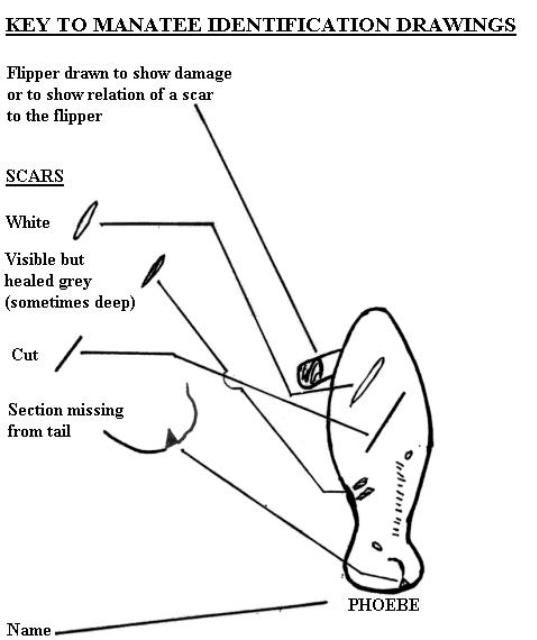
Credit: Wayne Hartley/Blue Spring State Park
Lesson 15: Manatee Sketch Worksheet
Name: ________________________________ Manatee photo letter: ________
Consider these questions, then draw the appropriate scars/marks on the manatee outline:
- Which side of the manatee is the scar on?
- What is the shape?
- What color is the scar?
- Are there other distinctive markings on the skin?
- Do you see anything missing from the manatee?
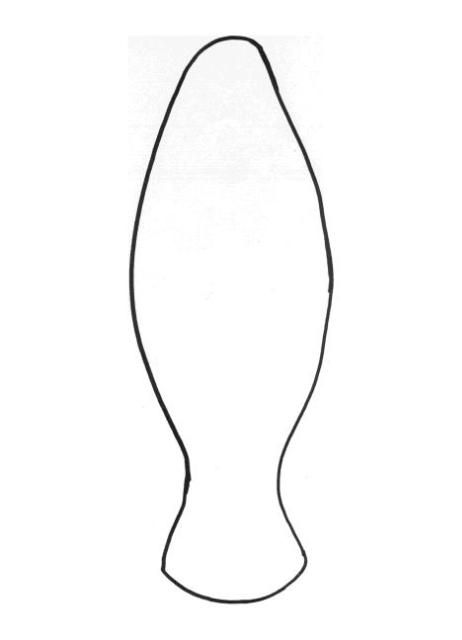
Lesson 15: Manatee Identification Ranger Wayne's Scar Sheet from Blue Spring State Park
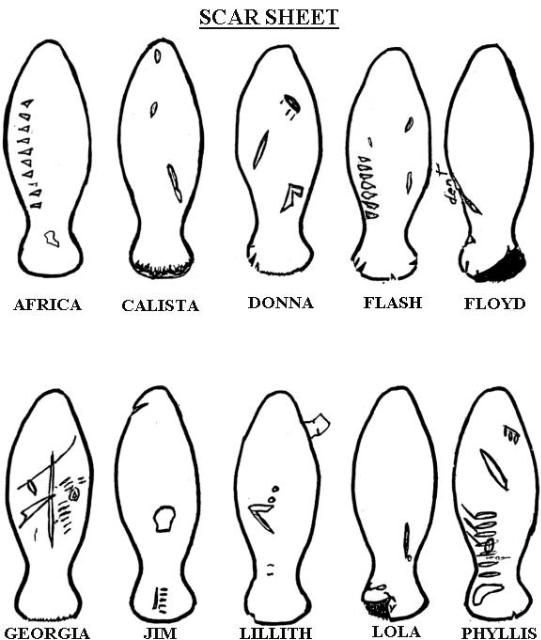
Credit: Wayne Hartley/Blue Spring State Park
Lesson 15: Manatee Photo Identification
Manatee A
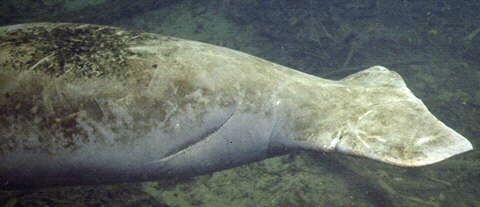
Credit: USGS, Southeast Ecological Science Center, Sirenia Project
Manatee B
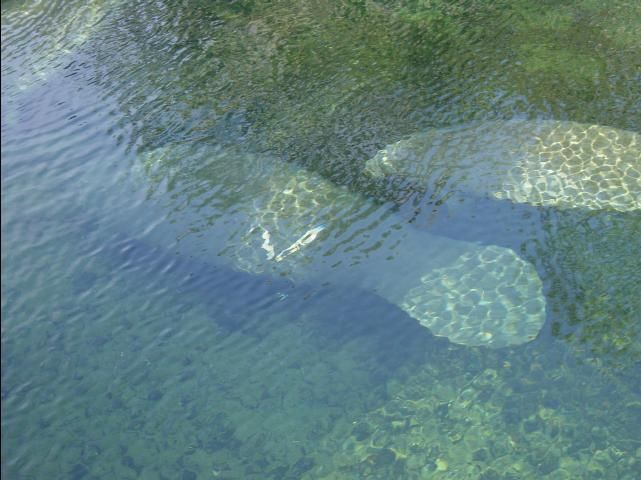
Credit: USGS, Southeast Ecological Science Center, Sirenia Project
Manatee C
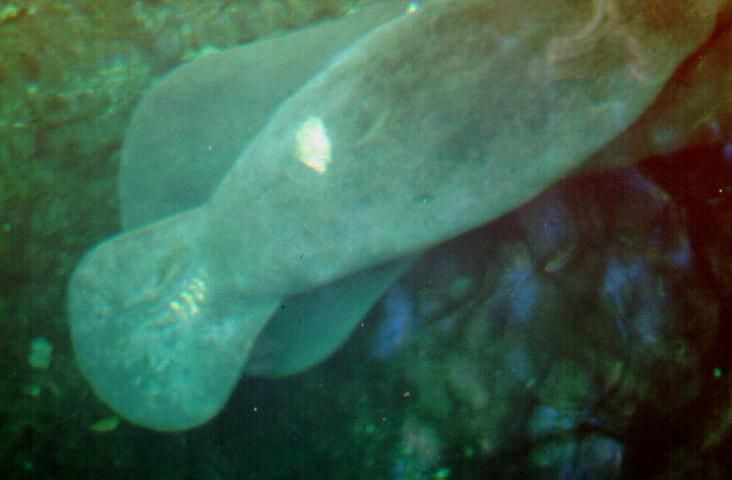
Credit: USGS, Southeast Ecological Science Center, Sirenia Project
Manatee D
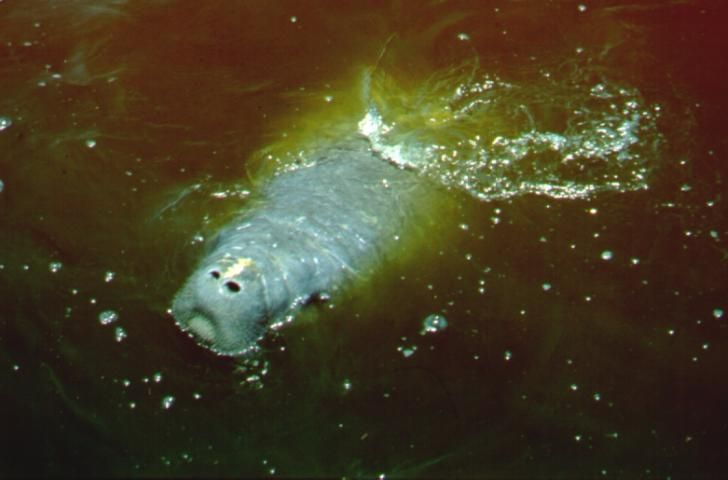
Credit: USGS, Southeast Ecological Science Center, Sirenia Project
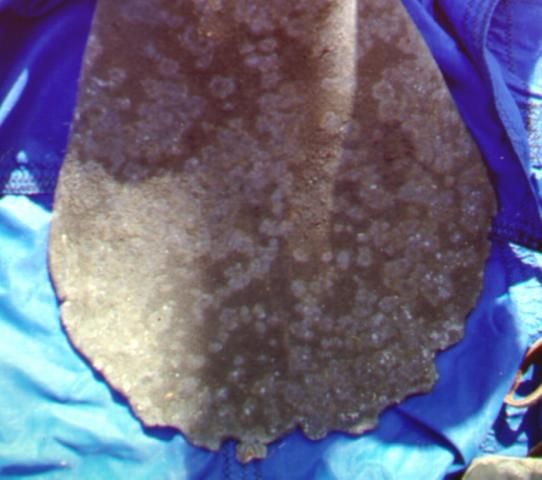
Credit: USGS, Southeast Ecological Science Center, Sirenia Project
Manatee E
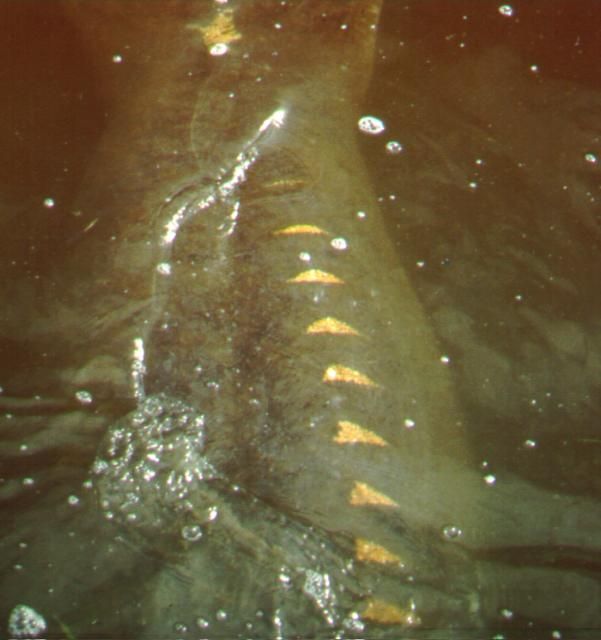
Credit: USGS, Southeast Ecological Science Center, Sirenia Project
Manatee F
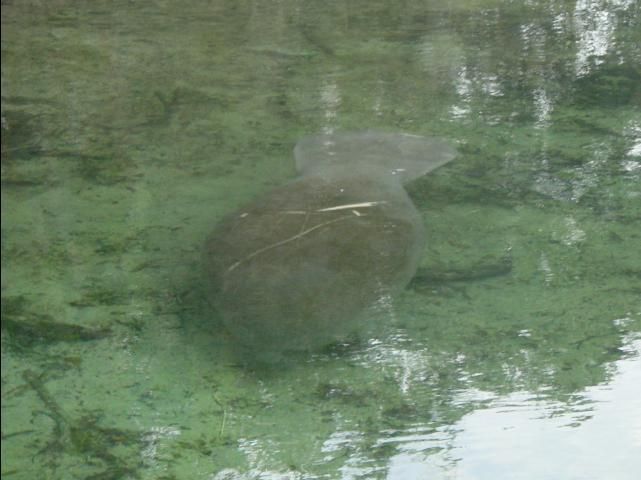
Credit: USGS, Southeast Ecological Science Center, Sirenia Project